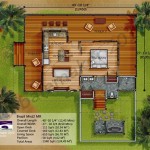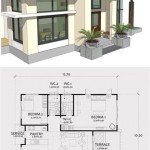Stone house plans refer to blueprints or design documents that provide a comprehensive outline for constructing a house primarily using stone as the primary building material. Stone houses are known for their durability, aesthetic appeal, and ability to withstand the elements. They are often considered a desirable choice in areas with harsh climates or where stone is readily available.
One notable example of a stone house plan is the “Stonehaven” model. This plan features a spacious three-bedroom, two-bathroom layout with a grand stone fireplace as its centerpiece. The exterior boasts a combination of natural stone and timber accents, creating a charming and rustic ambiance. The Stonehaven plan demonstrates the flexibility and versatility of stone as a building material, allowing for the creation of both traditional and modern house designs.
In the following sections, we will delve deeper into the various aspects of stone house plans, including their advantages, design considerations, and construction techniques. We will explore the different types of stone used in building, as well as the latest trends and innovations in stone house design.
Stone house plans offer a myriad of benefits and considerations. Here are 8 important points to keep in mind:
- Durable and long-lasting
- Fire-resistant and low-maintenance
- Energy-efficient and thermally insulating
- Aesthetically pleasing and versatile
- Require skilled craftsmanship
- Can be more expensive than other materials
- May have limitations in design complexity
- Prone to moisture issues if not properly sealed
Understanding these points will help you make informed decisions when considering stone house plans.
Durable and long-lasting
Stone houses are renowned for their exceptional durability and longevity. Unlike many other building materials, stone is highly resistant to weathering, decay, and insect damage. This makes stone houses ideal for areas with harsh climates or where durability is a primary concern.
- Resistant to weathering
Stone’s dense and non-porous nature makes it impervious to moisture penetration. This prevents water damage, rot, and mold growth, ensuring the structural integrity of the house over decades.
- Resistant to fire
Stone is a naturally fire-resistant material. In the event of a fire, stone houses are less likely to catch fire and can withstand high temperatures without collapsing.
- Resistant to pests
Stone houses are not susceptible to termite or other insect infestations, which can cause significant damage to wooden structures. This eliminates the need for costly pest control treatments.
- Low maintenance
Stone houses require minimal maintenance compared to other types of houses. The exterior stone surfaces are generally easy to clean and do not require regular painting or staining.
The durability and longevity of stone houses make them a worthwhile investment, offering peace of mind and reduced maintenance costs over the lifespan of the building.
Fire-resistant and low-maintenance
Fire-resistant
Stone’s inherent fire resistance is a crucial safety advantage of stone house plans. Unlike wood or other combustible materials, stone does not ignite easily and can withstand high temperatures without losing its structural integrity. This makes stone houses highly resistant to the spread of fire, providing peace of mind and increased protection for occupants and belongings.
Low-maintenance
Stone houses offer significant advantages in terms of low maintenance compared to other types of houses. The exterior stone surfaces are highly durable and do not require regular painting or staining. Stone is also resistant to fading and discoloration caused by exposure to sunlight and weather elements. This eliminates the need for frequent exterior maintenance tasks, saving time and money.
Moisture resistance
Stone’s low porosity makes it highly resistant to moisture penetration. This prevents water damage, rot, and mold growth, which can compromise the structural integrity and indoor air quality of a house. Stone houses are particularly well-suited for areas with high humidity or frequent rainfall, as they are less prone to moisture-related issues.
Pest resistance
Stone houses are not susceptible to termite or other insect infestations, which can cause significant damage to wooden structures. This eliminates the need for costly pest control treatments and ensures the longevity of the house. The absence of organic materials in stone makes it an unattractive environment for pests, further contributing to the low-maintenance nature of stone houses.
The fire-resistant and low-maintenance qualities of stone houses make them an excellent choice for those seeking durability, safety, and reduced maintenance costs over the lifespan of the building.
Energy-efficient and thermally insulating
Stone houses offer excellent energy efficiency and thermal insulation properties, contributing to reduced energy consumption and a more comfortable indoor environment.
- High thermal mass
Stone has a high thermal mass, which means it absorbs and releases heat slowly. This helps to regulate indoor temperatures, keeping the house cooler in summer and warmer in winter. This reduces the need for heating and cooling systems, leading to lower energy bills.
- Natural insulation
Stone is a natural insulator, providing resistance to heat flow. The thick stone walls of a stone house act as a barrier, preventing heat loss in the winter and heat gain in the summer. This helps to maintain a comfortable indoor temperature without relying heavily on artificial heating or cooling systems.
- Reduced air infiltration
Stone houses are less prone to air infiltration compared to houses with other types of exterior walls. The tight joints and dense structure of stone walls minimize air leakage, which helps to maintain a consistent indoor temperature and reduce heat loss.
- Passive solar design
Stone houses can be designed to incorporate passive solar principles, utilizing the sun’s energy to heat the house naturally. Large windows facing south can allow sunlight to enter during the winter, warming the stone walls and radiating heat into the interior. This reduces the need for additional heating sources.
The energy-efficient and thermally insulating properties of stone houses make them an environmentally friendly and cost-effective choice, providing a comfortable and energy-conscious living environment.
Aesthetically pleasing and versatile
Natural beauty and timeless appeal
Stone houses possess an inherent aesthetic appeal that is unmatched by many other building materials. The natural beauty of stone, with its variations in color, texture, and veining, creates a timeless and elegant look. Stone houses blend harmoniously with their surroundings, whether in rural or urban settings, adding character and charm to any neighborhood.
Design flexibility and customization
Stone house plans offer a remarkable degree of design flexibility and customization. Architects and designers can work with stone in various ways to create houses that reflect the unique tastes and preferences of homeowners. Stone can be cut, shaped, and finished in countless ways, allowing for intricate details, decorative elements, and a wide range of architectural styles.
Adaptability to different terrains and landscapes
Stone houses are highly adaptable to different terrains and landscapes. Their sturdy construction and natural materials make them well-suited for challenging terrains, such as hillsides or uneven ground. Stone houses can also be designed to complement the surrounding landscape, whether it be a lush forest, a rugged coastline, or a desert environment.
Integration of natural elements
Stone houses provide a unique opportunity to integrate natural elements into the design. Large windows and outdoor living spaces can be incorporated to maximize natural light and connect the interior with the exterior. Stone patios, walkways, and retaining walls can further enhance the connection between the house and its surroundings, creating a harmonious and cohesive living environment.
The aesthetic appeal and versatility of stone house plans make them an excellent choice for homeowners seeking a timeless, customizable, and nature-inspired living space.
Require skilled craftsmanship
Specialized knowledge and expertise
Building a stone house requires specialized knowledge and expertise that goes beyond general construction practices. Stone masons and other skilled craftsmen are needed to handle the unique properties of stone and ensure the structural integrity and aesthetic appeal of the house. These skilled professionals have a deep understanding of stone types, cutting techniques, and construction methods, enabling them to execute complex designs and achieve the desired architectural vision.
Precision and attention to detail
Stonework demands a high level of precision and attention to detail. Each stone must be carefully selected, cut, and placed with millimeter-level accuracy to ensure a seamless and durable structure. Skilled craftsmen take pride in their work, paying meticulous attention to every joint, corner, and finish. This precision ensures not only the structural stability of the house but also its aesthetic beauty and long-lasting performance.
Artistic flair and creativity
While stone house plans provide a blueprint for the overall structure, skilled craftsmen often bring their own artistic flair and creativity to the project. They may suggest design modifications or propose innovative ways to incorporate stone into the house, enhancing its visual appeal and functionality. Their expertise allows them to create unique and personalized stone houses that reflect the homeowner’s taste and aspirations.
Collaboration and teamwork
Building a stone house is a collaborative process that requires teamwork and coordination among various skilled professionals. Architects, engineers, stone masons, and other specialists work together to ensure that the design is feasible, structurally sound, and aesthetically pleasing. This collaboration ensures that the stone house is built to the highest standards of quality and craftsmanship.
The requirement for skilled craftsmanship is a key consideration in stone house plans, as it directly impacts the quality, durability, and overall success of the project.
Can be more expensive than other materials
Material costs
Stone is a premium building material, and its cost can vary depending on the type of stone, its availability in the region, and the complexity of the design. Natural stone, such as granite or marble, is generally more expensive than manufactured stone or stone veneers. The size and thickness of the stone used can also impact the overall cost.
Labor costs
Skilled stone masons and craftsmen charge higher labor rates due to their specialized knowledge and expertise. The intricacy of the stonework, the size of the house, and the geographic location can further affect labor costs. Building a stone house requires more time and effort compared to houses made from other materials, which can increase the overall labor expenses.
Transportation costs
If the desired stone type is not locally available, transportation costs can add to the overall expense. Quarrying, processing, and transporting large quantities of stone can be a significant expense, especially for large-scale projects or when the building site is far from the stone source.
Maintenance costs
While stone houses generally require less maintenance than houses made from other materials, certain types of stone may require periodic cleaning, sealing, or repairs to maintain their appearance and structural integrity. The cost of these maintenance tasks should be considered when evaluating the long-term expenses of a stone house.
The higher material, labor, transportation, and maintenance costs associated with stone houses should be carefully considered when planning a stone house project. However, the durability, aesthetic appeal, and energy efficiency of stone houses can provide long-term value and potential savings in other areas.
May have limitations in design complexity
Structural considerations
Stone is a heavy and rigid material, which can impose limitations on the design complexity of stone houses. Large, open floor plans and intricate architectural details may require additional structural support, such as beams, columns, or buttresses, to ensure the stability of the house. These structural elements can affect the overall design and layout of the house, potentially limiting the architect’s ability to create highly complex or unconventional designs.
Stone properties and limitations
The natural properties of stone, such as its weight, brittleness, and resistance to shaping, can also limit design complexity. Stone is not as malleable as other building materials like wood or steel, making it challenging to create curved or fluid forms. Additionally, certain stone types may have inherent flaws or variations that can affect the design and construction process, requiring adjustments or compromises to maintain structural integrity and aesthetic appeal.
Craftsmanship and skill requirements
The intricate and specialized craftsmanship required for stonework can impact design complexity. Highly detailed or ornate stonework, such as intricate carvings or elaborate moldings, requires highly skilled stone masons and can be time-consuming and costly. The availability of skilled craftsmen in the area and their ability to execute complex designs can influence the feasibility and cost of the project, potentially limiting the design options available to the homeowner.
Cost implications
The higher material and labor costs associated with stone houses can also affect design complexity. Complex designs that require extensive stonework, specialized craftsmanship, or intricate detailing can significantly increase the overall cost of the project. Homeowners may need to balance their design aspirations with the financial constraints of the project, potentially leading to compromises or simplifications in the design to stay within budget.
While stone house plans offer numerous advantages, it is important to be aware of the potential limitations in design complexity. Architects and homeowners should carefully consider the structural, material, craftsmanship, and cost implications when designing stone houses to ensure a successful and satisfying building project.
Prone to moisture issues if not properly sealed
Stone, while durable and long-lasting, is not inherently waterproof. Moisture can penetrate stone through its pores and cracks, leading to a range of issues if not properly sealed. Here are four key points to consider:
- Water damage
Unsealed stone is susceptible to water damage, especially in areas with high humidity or frequent rainfall. Water penetration can cause the stone to deteriorate, weaken, and develop cracks over time. This can compromise the structural integrity of the house and lead to costly repairs.
- Mold and mildew growth
Moisture trapped within stone can create a breeding ground for mold and mildew. These microorganisms can cause health problems for occupants, especially those with allergies or respiratory issues. Mold and mildew can also discolor and damage the stone, affecting its appearance and value.
- Efflorescence
Efflorescence is a white or grayish crystalline deposit that can form on the surface of stone when moisture evaporates, leaving behind dissolved minerals. This unsightly deposit can detract from the aesthetic appeal of the stone and may require professional cleaning or treatment to remove.
- Freeze-thaw damage
In climates with freezing temperatures, moisture trapped within unsealed stone can freeze and expand, causing the stone to crack or spall. Repeated freeze-thaw cycles can significantly damage the stone, reducing its durability and lifespan.
Properly sealing stone surfaces is crucial to prevent moisture penetration and its associated problems. Sealants act as a protective barrier, preventing water from entering the stone’s pores and causing damage. Regular maintenance and reapplication of sealants are essential to ensure the longevity and beauty of stone house plans.










Related Posts








